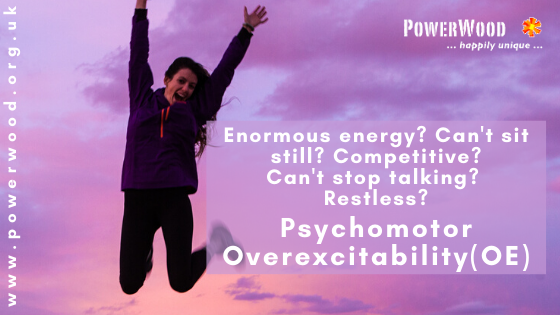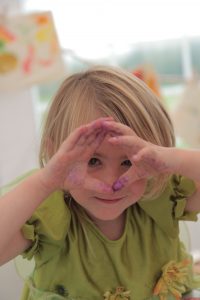
Exploring OverExcitability – E-Book FREE read about:
- How having OE might affect yourself and/or your child.
- Where this behaviour stems from.
- How it can be misdiagnosed.
- What the strengths are of having Overexcitability.
Psychomotor OE
 Children, with psychomotor OE, have an enormous amount of energy. They have a strong need to engage in physical activities, liking to move, dance, run, climb, play fight as well as fast games and sports. They often express strong enthusiasm when engaged and might talk rapidly and excessively.
Children, with psychomotor OE, have an enormous amount of energy. They have a strong need to engage in physical activities, liking to move, dance, run, climb, play fight as well as fast games and sports. They often express strong enthusiasm when engaged and might talk rapidly and excessively.
Concentration 
They may have difficulty sitting still and concentrating when not interested, often seen as a characteristic of ADD/ADHD (Attention Deficit Disorder/Attention Deficit Hyperactivity Disorder), which means that the psychomotor OE child has the potential of being misdiagnosed with ADHD.
“John (7) can’t sit still. During dinner he runs between the table and the cupboard, the fridge and the toys in the other room; he hardly touches his chair, while talking all the time. The more emphasis his behaviour gets and the more the parents get stressed, the more John moves and talks.” Observation by Simone
Restless
When feeling emotionally tense, they might be restless, compulsive talkers and develop nervous habits such as nail-biting, hair pulling and skin scratching.
When stressed they can be very impulsive, show an intense physical drive, organise their room very compulsively (which is sometimes seen as a characteristic of Obsessive Compulsive Disorder), act out, become extremely competitive or engage in adrenaline stimulating behaviours. When under stress psychomotor OE individuals often show signs of workaholism and competitiveness.
To be able to move or fidget can be calming and aid concentration.
“My son could only listen to me reading a book out loud when his hands were occupied He would always draw or try to play very silently with his Lego.” Simone about her now young adult son.
Energy Changing
Often if a child with psychomotor OE enters the room, the energy changes and his or her presence can be disturbing to the routine.
This OE is a great gift to have because, although difficult in a classroom setting, later in life, they are able to put all that energy into achieving their own chosen goals.
Read more about the other areas of intensity: Sensual, Intellectual, Imaginational and Emotional.
Book a FREE Introductory Talk with a Professional*
You can read more about PowerWood’s Consultancy Sessions, the Benefits of a Free Introductory Talk and PowerWood’s Consultancy Services Tiered Fee Structure.
You might also want to download PowerWoods ‘Exploring Overexcitability’ eBook:
*Boundary Test
A HUGE thank YOU to the son and daughter of Ernest Hartmann’s who gave PowerWood permission to use and put the full academically approved questionnaire about the Boundary in the Mind on PowerWood’s website.
Find out how the Boundary in the Mind affects you or your child
Further Reading
UK
Lucinda Leo’s (PowerWood Volunteer) Blog: 7 Signs Your Child Has Psychomotor Overexcitability
USA
Jade Ann Rivera: How to Identify and Cope with Overexcitabilities, Part 4 of 5: Psychomotor Overexcitability
Living With Intensity: Understanding the Sensitivity, Excitability and Emotional Development of Gifted Children, Adolescents, and Adults (Book edited by Daniels and Piechowski)
Misdiagnosis and Dual Diagnosis of Gifted Children and Adults (James T Webb)
